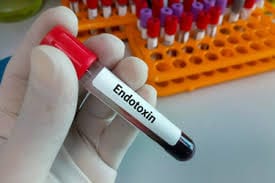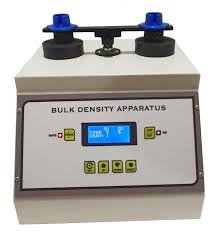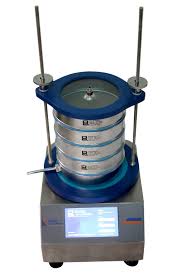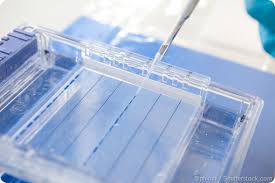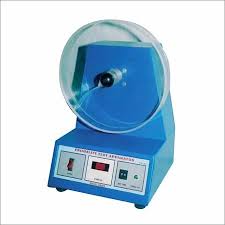|
Getting your Trinity Audio player ready... |
Q4b Annex 4b(R1) Microbiological Examination Of Non-Sterile Products: Tests For Specified Micro Organisms
1. INTRODUCTION: Specified Micro Organisms
Micro Organisms: The concept of microbiological examination of non-sterile products is an essential component of pharmaceutical quality control to ensure that products are free from harmful microorganisms that could pose a risk to patient health. The process involves evaluating non-sterile products for specific types of microorganisms that may be present, ensuring they meet the safety standards required by regulatory agencies.
This document, specifically addressing the tests for specified microorganisms, has been developed through the Q4B process, which facilitates the harmonization of guidelines and standards across the global pharmaceutical industry. The outcome of this process provides a unified approach to microbiological testing for non-sterile products and serves as a valuable resource for manufacturers and regulatory bodies to ensure consistent product quality.
The annex at hand results from the collaborative efforts of the Pharmacopoeial Discussion Group (PDG) under the International Council for Harmonisation (ICH) framework. The PDG has worked meticulously to align and standardize the pharmacopoeial texts of various regions, ensuring that non-sterile products are uniformly assessed for specified microorganisms in accordance with the highest standards of safety.
2. Q4B OUTCOME
2.1 Analytical Procedures
The ICH Steering Committee, in consultation with the Q4B Expert Working Group (EWG), has reviewed and evaluated several official pharmacopoeial texts regarding microbiological testing of non-sterile products. After comprehensive evaluation, it was concluded that the pharmacopoeial texts of the European Pharmacopoeia (Ph. Eur.), the Japanese Pharmacopoeia (JP), and the United States Pharmacopeia (USP) can be used interchangeably in the ICH regions.
The official texts that have been identified as interchangeable include:
- Ph.Eur. 2.6.13: Microbiological Examination of Non-Sterile Products: Tests for Specified Microorganisms
- JP 4.05: Microbiological Examination of Non-Sterile Products: II. Microbiological Examination of Non-Sterile Products: Tests for Specified Microorganisms
- USP <62>: Microbiological Examination of Non-Sterile Products: Tests for Specified Microorganisms
This alignment means that manufacturers and regulatory authorities can rely on any of these pharmacopoeial standards when evaluating non-sterile products for microbial content, promoting global consistency in pharmaceutical testing.
2.2 Acceptance Criteria
It is important to note that the proposed texts evaluated in this process did not include specific acceptance criteria for microbiological testing. While this omission does not undermine the overall effectiveness of the harmonized guidelines, it does necessitate that regulatory bodies and manufacturers rely on established regional criteria for microbiological testing to ensure product compliance with safety and quality standards.
The absence of explicit acceptance criteria in the evaluated texts means that each region must determine the threshold levels for microbial contamination in non-sterile products based on their own regulatory requirements. Manufacturers will also need to adapt their procedures to ensure that they meet the relevant regional acceptance criteria.
3. TIMING OF ANNEX IMPLEMENTATION
Once this annex is fully implemented and incorporated into the regulatory framework at ICH Step 5, it will become a mandatory part of the regulatory process in each region. However, the timing of its implementation may vary between regions depending on their local regulatory mechanisms and timelines.
The process of harmonizing pharmacopoeial standards typically takes time to ensure that all stakeholders, including regulatory agencies, manufacturers, and industry experts, are fully prepared to adopt the new guidelines. Each region’s regulatory authority will provide more specific details on the timing of implementation once the annex has been formally incorporated.
4. CONSIDERATIONS FOR IMPLEMENTATION
4.1 General Considerations
The successful implementation of the Q4B-evaluated pharmacopoeial texts, as outlined in Section 2.1, will require that sponsors and manufacturers adopt the new methods for microbiological testing. This process may involve revising existing testing procedures and ensuring that the new methodologies are integrated into current quality control systems.
When adopting these new pharmacopoeial standards, manufacturers must be mindful of the necessary regulatory procedures. Changes to testing methods, whether voluntary or required, will likely trigger notification, variation, or prior approval processes depending on the region. These changes must be handled in accordance with established regional regulatory mechanisms, which could include the submission of updated documentation or revisions to marketing authorizations.
4.2 FDA Considerations
For the United States Food and Drug Administration (FDA), the adoption of the Q4B-evaluated pharmacopoeial texts as interchangeable will be contingent on the manufacturer demonstrating that the chosen microbiological testing method is suitable for the specific product in question. The FDA may require additional evidence or data to support the suitability of a method, regardless of its origin, before approving its use for a particular product.
Manufacturers are advised to prepare to demonstrate that their chosen microbiological testing methods are appropriate for their specific non-sterile products. This could include submitting data from validation studies, demonstrating that the testing methods consistently produce reliable and reproducible results.
4.3 EU Considerations
For manufacturers operating in the European Union (EU), it is important to note that the monographs of the Ph. Eur. have mandatory applicability. However, regulatory authorities in the EU are prepared to accept the use of pharmacopoeial texts from other regions, such as those from the USP or JP, provided that the use of these texts is declared as interchangeable.
As part of the approval process, when a marketing authorization application, renewal, or variation is submitted, manufacturers can reference the use of microbiological testing methods from other pharmacopoeias. This can help streamline the approval process while ensuring that products remain in compliance with EU regulations. Regulatory authorities will consider the declaration of interchangeability outlined in this annex when making decisions regarding the acceptability of these tests.
4.4 MHLW Considerations
In Japan, the Ministry of Health, Labour and Welfare (MHLW) has indicated that the pharmacopoeial texts referenced in this annex can be used interchangeably in accordance with the conditions set forth. Manufacturers should closely follow the guidelines provided by the MHLW to ensure compliance with local regulatory requirements.
The details of the implementation process in Japan will be provided by the MHLW upon formal adoption of the annex. These details will clarify any specific requirements or modifications needed to align with the new guidelines.
4.5 Health Canada Considerations
In Canada, Health Canada has acknowledged that the microbiological testing methods from the pharmacopoeial texts referenced in Section 2.1 of this annex are considered interchangeable. Manufacturers are therefore permitted to adopt the guidelines and standards from any of the referenced pharmacopoeias, as long as they comply with the conditions outlined in the annex.
Health Canada will provide further details on any specific regional considerations once the annex is fully implemented. Manufacturers should stay informed of any updates or additional requirements to ensure continued compliance.
5. REFERENCES USED FOR THE Q4B EVALUATION
The Q4B evaluation process was supported by a range of key references, including:
5.1 The PDG Stage 5B Sign-off Document
This document was part of the formal process for the approval of the Q4B evaluation and was published in the Japanese Pharmacopoeial Forum, Volume 14, Number 4, in December 2005. It provided a comprehensive overview of the findings and conclusions of the Q4B Expert Working Group.
5.2 Pharmacopoeial References for Microbiological Examination of Non-Sterile Products: Tests for Specified Micro-Organisms
The pharmacopoeial texts that formed the basis of this annex include:
- European Pharmacopoeia (Ph. Eur.): Edition 6.3 (official from January 2009), which includes the monograph on Microbiological Examination of Non-Sterile Products: Tests for Specified Micro-Organisms (reference 01/2009: 20613).
- Japanese Pharmacopoeia (JP): 4.05 Microbiological Examination of Non-Sterile Products: II. The relevant text appears in Supplement I to the Japanese Pharmacopoeia Fifteenth Edition (published on September 28, 2007), with the English version issued on January 9, 2008.
- United States Pharmacopeia (USP): <62> Microbiological Examination of Non-Sterile Products: Tests for Specified Micro-Organisms, official in USP 30, as of January 2007.
These references provided the foundation for the harmonized approach to microbiological testing and were essential in establishing the framework for global compatibility in testing standards.




